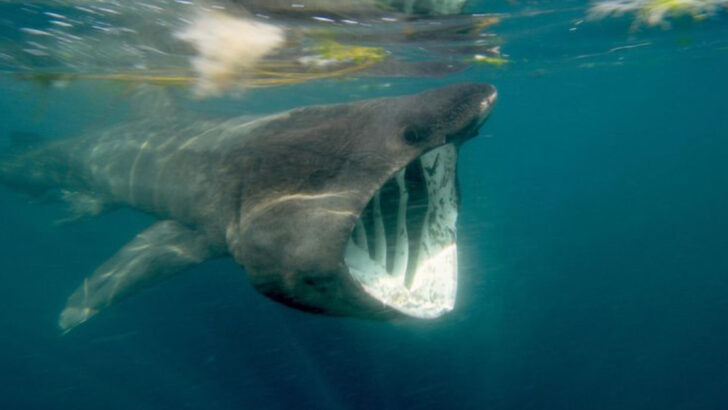The basking shark is huge, terrifying-looking—and a total softie.
At up to 40 feet long, this gentle giant cruises the ocean with its mouth wide open like it’s constantly shocked. But don’t be fooled by the gaping jaws and prehistoric face—it’s a filter feeder, gobbling up plankton like a slow-moving vacuum cleaner.
It doesn’t want to eat you. It probably doesn’t even know you exist.
With skin like sandpaper and a dorsal fin that could ruin your beach day, the basking shark looks like a creature straight out of a sea monster legend. But it’s real, it’s weird, and it might be the chillest shark on the planet.
Ready to meet the second-largest fish in the world—who just wants to vibe and eat tiny sea bugs all day?
Let’s dive in.
Gentle Giants of the Ocean
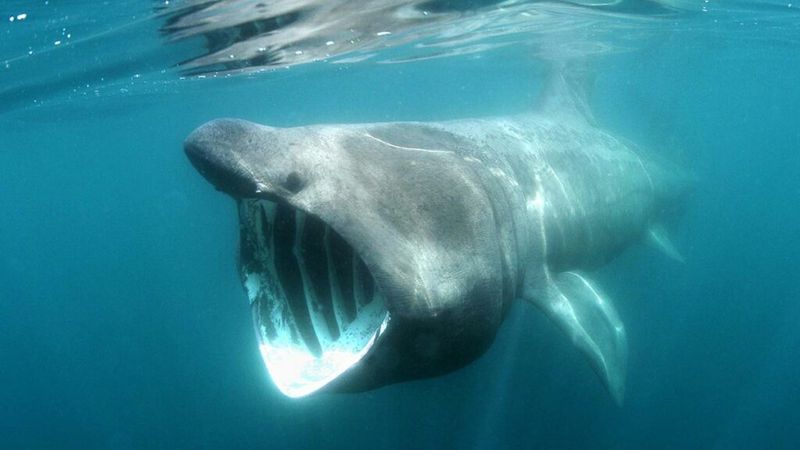
Imagine encountering a creature as big as a school bus, yet as harmless as a butterfly. The basking shark, known for its enormous size, is a gentle plankton eater. Swimming with its mouth wide open, it filters thousands of liters of water per hour. Despite its intimidating appearance, it’s completely harmless to humans. These peaceful giants can grow up to 39 feet long, making them the second largest fish on the planet. Observers often marvel at their slow, graceful movements and serene demeanor, offering a calming presence in the vast ocean.
World Traveler
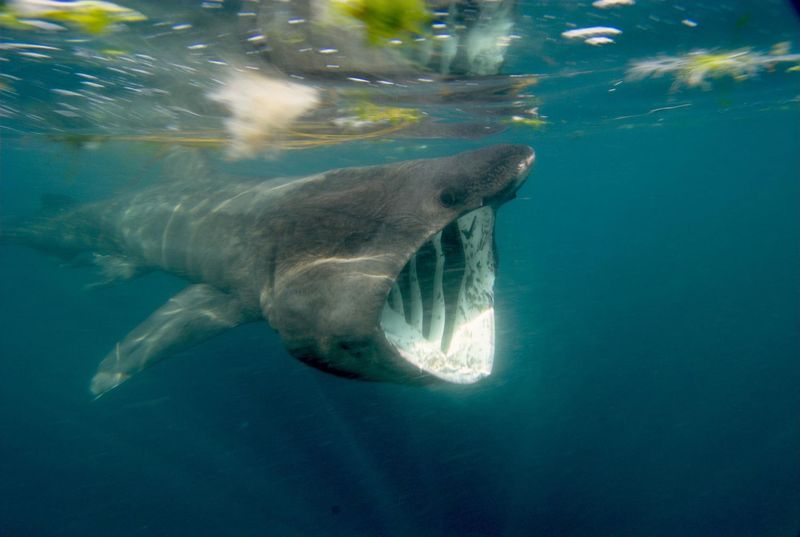
Every year, basking sharks embark on long migrations, traversing oceans in search of food and warm waters. Tagged specimens have been recorded traveling over 9,000 miles in a single journey! Their migration patterns are still a mystery to scientists, as they venture from coastal waters to the deep ocean. These wanderers demonstrate an astounding stamina and adaptability to different marine environments. Their incredible journeys highlight the interconnectedness of ocean ecosystems, as they traverse international waters with ease, often visiting multiple countries along their route.
Filter Feeding Masters
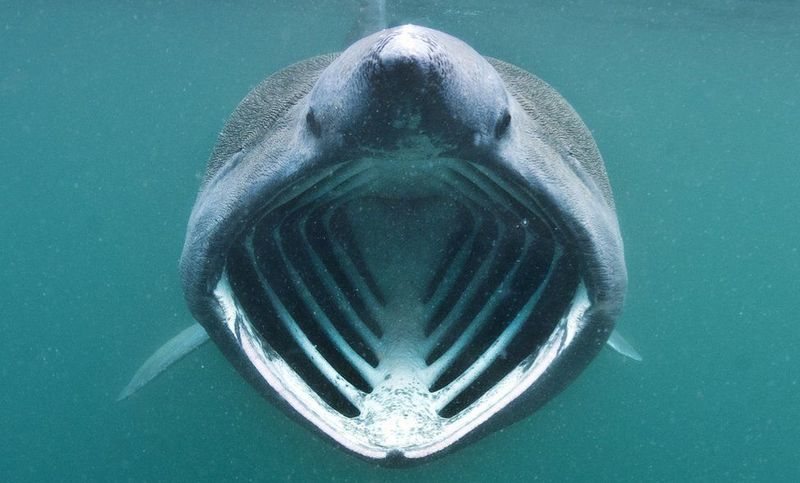
Basking sharks are filter feeders, relying on plankton as their primary food source. With their enormous mouths, they swim slowly, filtering water through their gill rakers. This unique feeding method allows them to consume thousands of tiny plankton particles effortlessly. Their ability to filter up to 2,000 tons of water per hour is truly astonishing. Observers can often see them near the surface, basking in the sun as they feed. This behavior not only sustains their massive bodies but also plays a crucial role in maintaining marine ecosystems’ balance.
Ancient Lineage
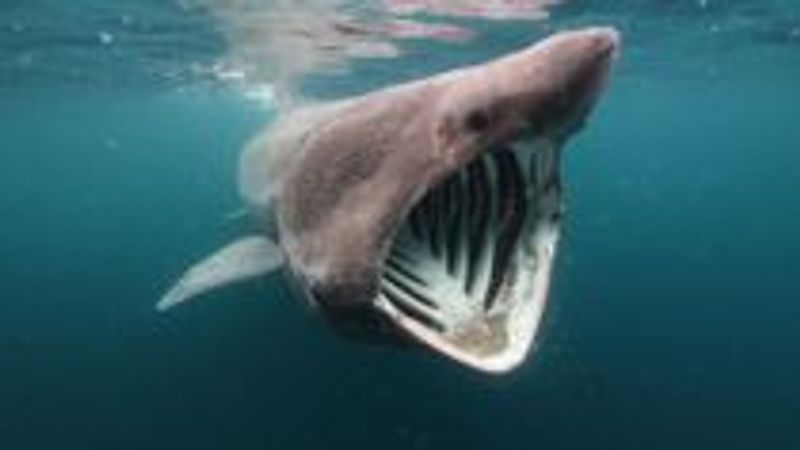
Basking sharks have a fascinating evolutionary history, dating back over 30 million years. As one of the oldest species of sharks, they offer a glimpse into the ancient marine world. Fossil records reveal that their ancestors roamed the oceans alongside dinosaurs. This ancient lineage is evident in their primitive body structure and behaviors. Their evolutionary success is a testament to their adaptability and resilience. Studying these living relics provides valuable insights into the earth’s historical climate and marine life evolution, making them a key species in paleontological research.
Cold Water Adaptations
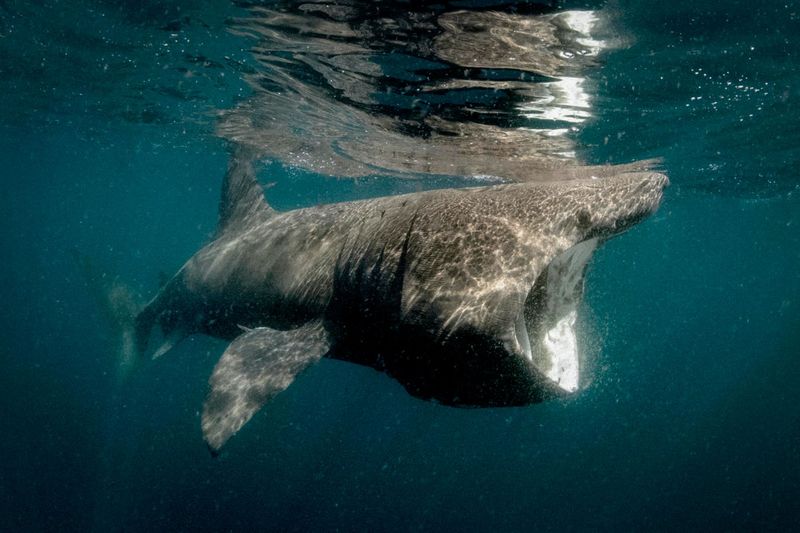
Despite their preference for warmer waters, basking sharks are well-adapted to cold environments. They are often found in the icy waters of the North Atlantic and Pacific Oceans. Their thick skin and large liver, rich in oils, provide insulation against the cold. These adaptations allow them to thrive in diverse climates, showcasing their remarkable resilience. Scientists are intrigued by their ability to regulate body temperature, a feature that aids their survival in frigid temperatures. This adaptability highlights the basking shark’s extraordinary capability to endure varying environmental conditions.
Mysterious Hibernation
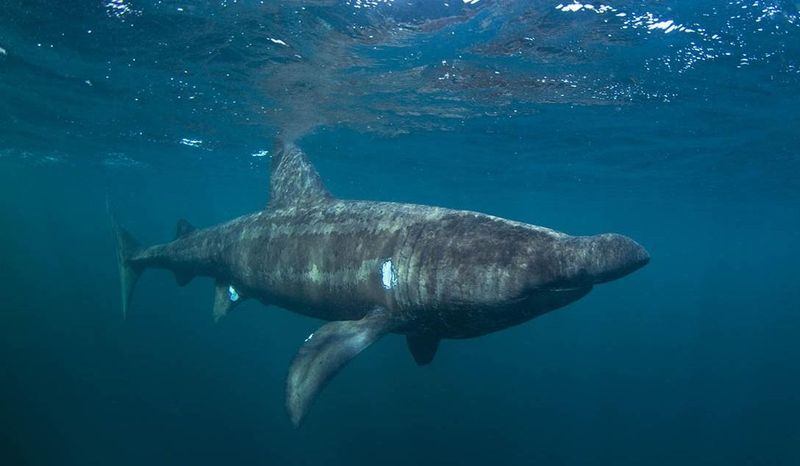
One of the most puzzling aspects of basking shark behavior is their hibernation-like state during winter months. They disappear from surface waters, leading scientists to believe they descend to deeper, warmer parts of the ocean. This behavior remains largely a mystery, with ongoing research aiming to uncover the secrets of their seasonal disappearance. Understanding this aspect could unlock further insights into their life cycles and oceanic behavior. Their enigmatic nature continues to intrigue and challenge marine biologists, adding a layer of mystery to these oceanic giants.
Remarkable Regeneration
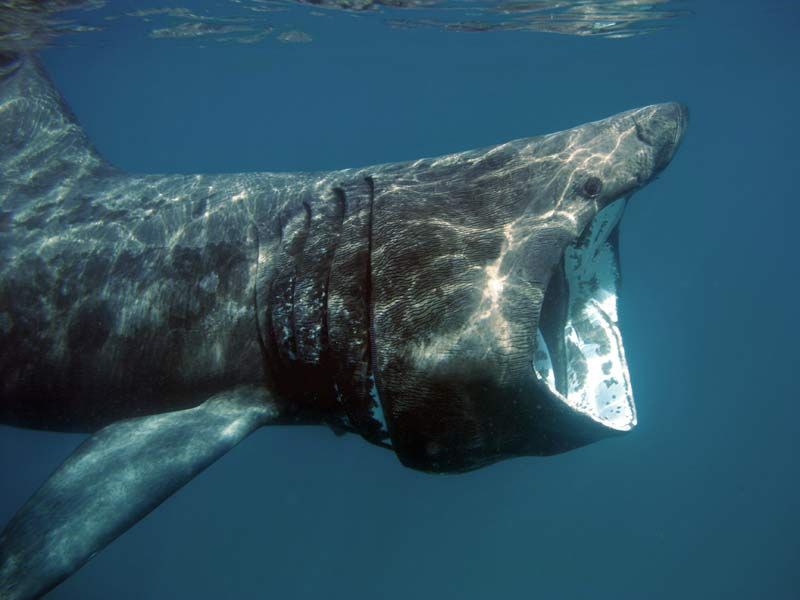
Basking sharks exhibit a remarkable ability to heal from injuries, showcasing nature’s resilience. Even after sustaining significant damage, such as fin cuts or scars, they can regenerate tissue over time. This regenerative capability is vital for their survival, given their long lifespan and the many hazards they face in the ocean. Scientists study this process to gain insights into wound healing and cellular regeneration, which could have implications for medical science. Witnessing their recovery from injuries is a testament to the incredible healing powers of these majestic creatures.
Social Creatures
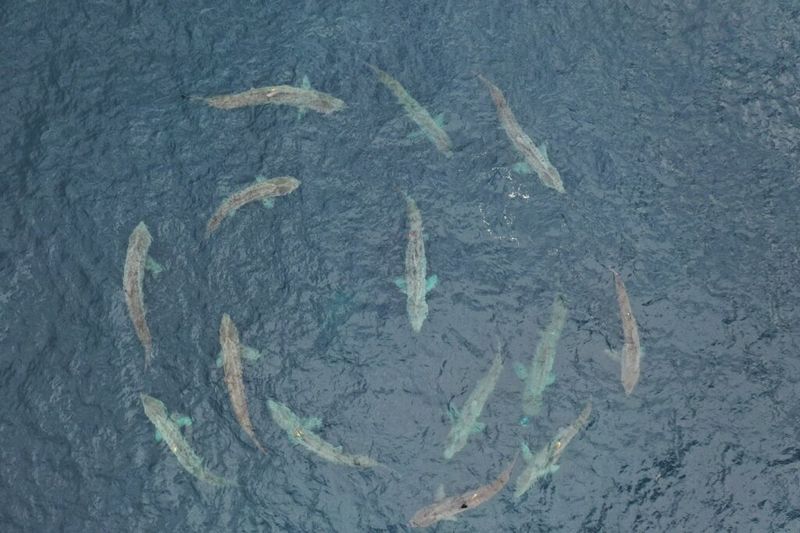
While often solitary, basking sharks can be surprisingly social. They are occasionally observed in groups, particularly during feeding or mating seasons. These gatherings can include dozens of individuals, creating a spectacular sight for onlookers. Their social interactions offer researchers a glimpse into their communication and mating behaviors. Understanding these dynamics is crucial for conservation efforts, as it helps in monitoring population health and breeding habits. The social nature of basking sharks adds a fascinating dimension to their study, revealing the complex lives of these gentle giants.
Slow Yet Agile
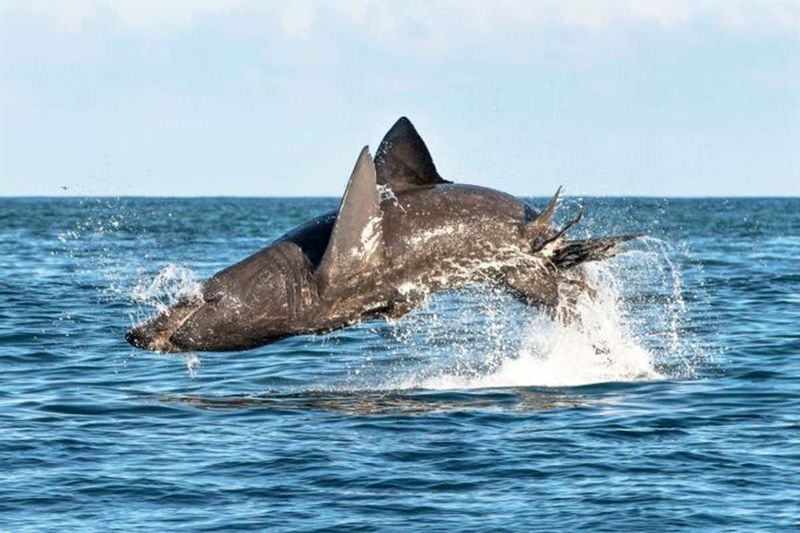
Despite their large size, basking sharks are agile swimmers. They may appear slow, but they can move with surprising speed and dexterity when needed. This agility aids them in escaping predators and navigating ocean currents efficiently. Their streamlined bodies and powerful tails contribute to their graceful movement through the water. Observers often admire their ability to glide effortlessly, a testament to their evolutionary design. This blend of size and agility makes them formidable presences in the ocean, gracefully commanding attention wherever they go.
Vulnerable Giants
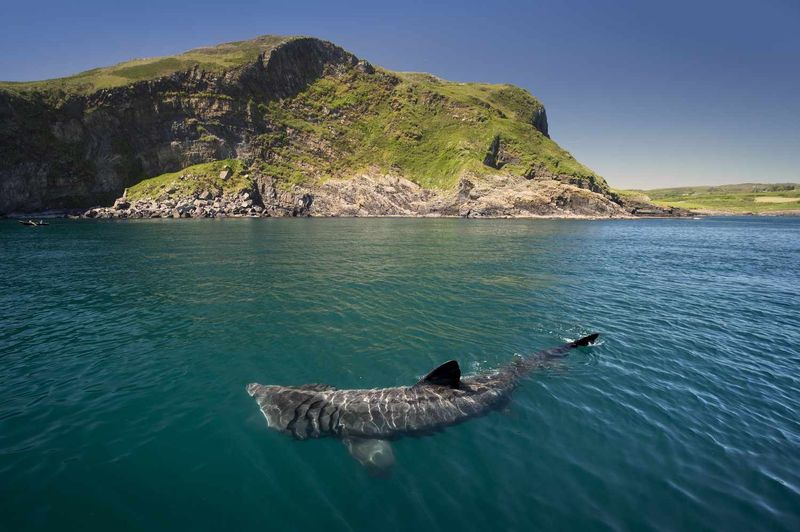
Basking sharks face numerous threats, from fishing and habitat loss to boat strikes and pollution. As a result, they are classified as vulnerable by conservation organizations. Efforts to protect these majestic creatures are crucial for maintaining ocean biodiversity. Awareness campaigns and protective regulations aim to reduce human impact on their populations. Their plight highlights the broader issues of marine conservation and the need for sustainable practices. Protecting basking sharks ensures the survival of a species that plays a vital role in the ocean’s health and ecosystem balance.
Curious Nature
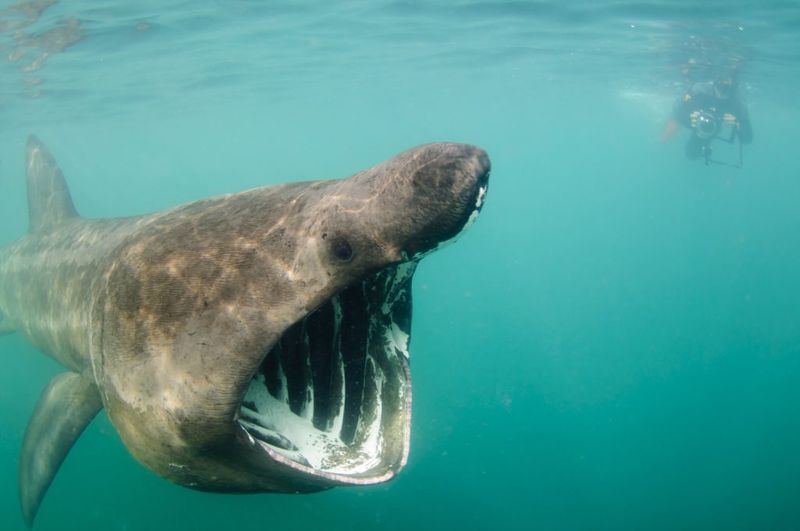
Basking sharks are known for their curious nature, often approaching boats and divers. This inquisitiveness makes them fascinating subjects for marine enthusiasts. Despite their size, they exhibit a gentle demeanor, allowing close encounters in the wild. Such interactions offer unique opportunities for observation and photography, providing insights into their behavior. Their curiosity also underscores the importance of respecting their space and promoting responsible wildlife tourism. Encountering a basking shark’s inquisitive gaze is an unforgettable experience, highlighting the gentle wonder of these oceanic giants.

